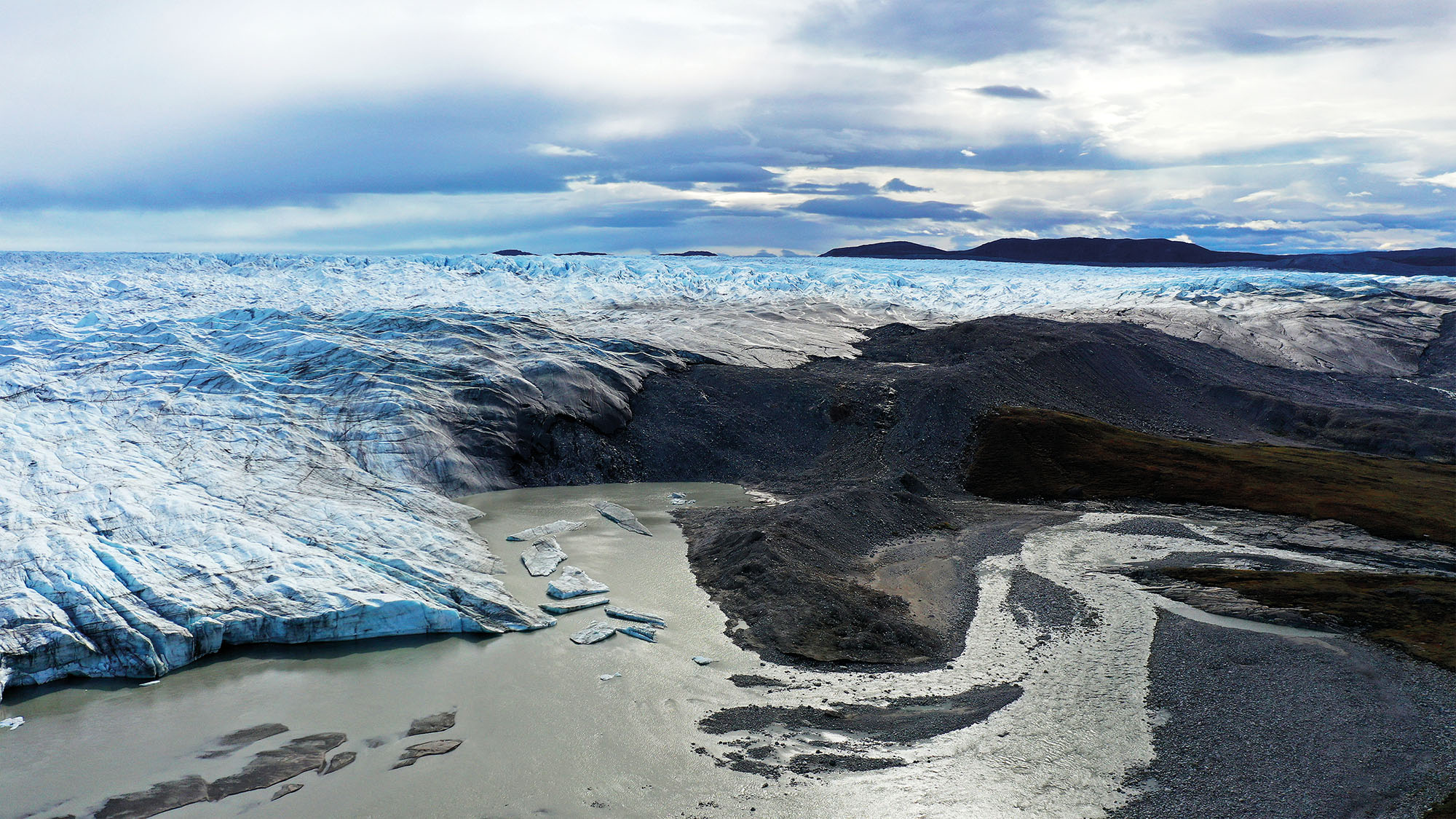Extreme E's arctic monkeys: electric racing in Greenland
Lining up in some of the most inhospitable locations on the planet, Extreme E is motor sport with an environmental message. Adam Hay-Nicholls travelled to the frozen wilderness of Greenland to find out what all the noise (or lack of it) is about
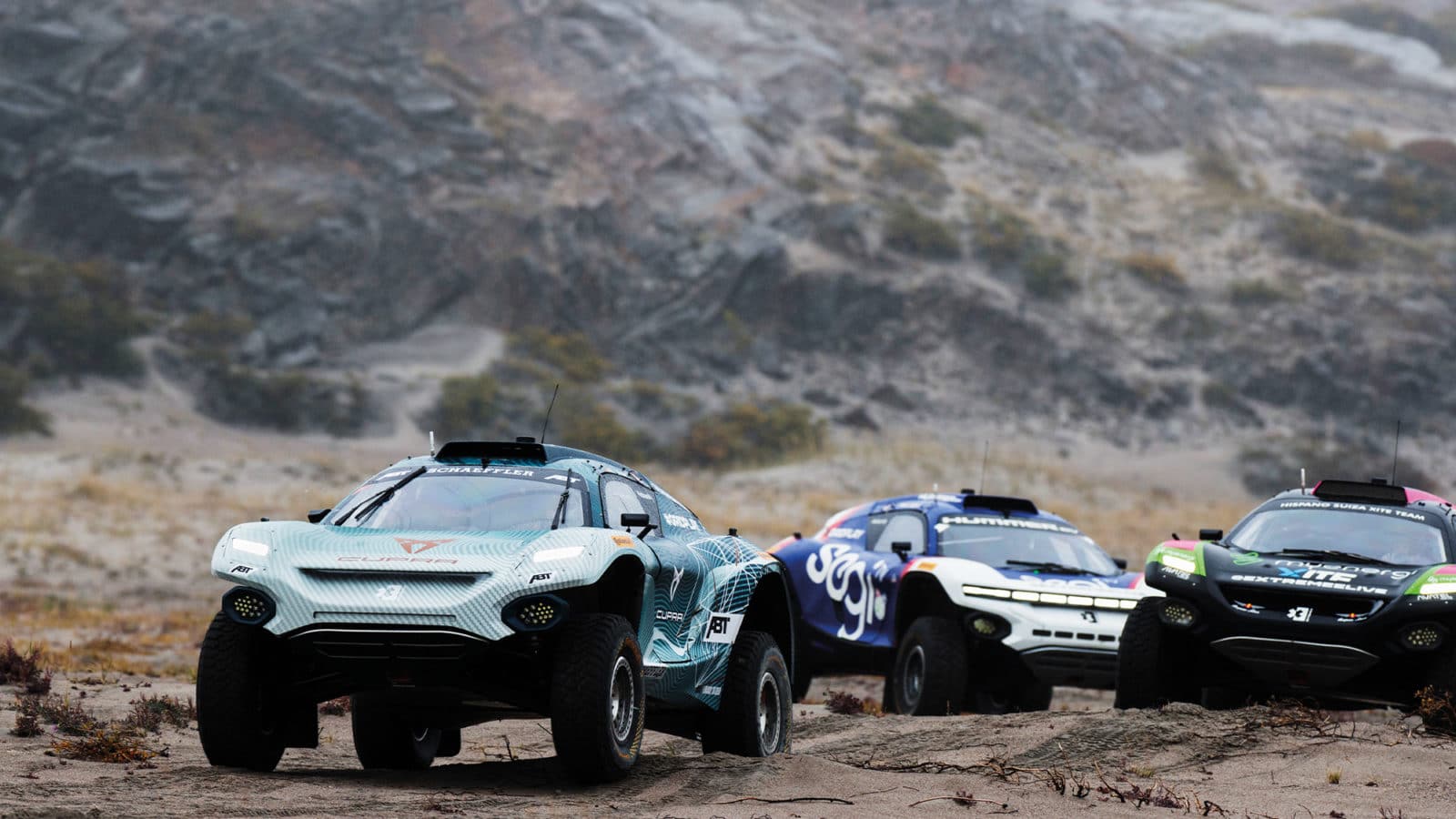
Mountains soar above the green and reddish-brown tundra and crystal-clear lakes, similar to the landscape of the Peak District, the Highlands, or the west coast of Ireland. Pan around, though, and you’re suddenly confronted by a gigantic and sheer wall of ice that looks like it’s been plonked there via a movie director’s CGI.
This is the scene for Extreme E’s Arctic X Prix. The nearest settlement is Kangerlussuaq, towards the bottom of this vast country’s west coast. A colourful jumble of low-rises with a population of just 508, built around an airport, this is, in fact, the main transport hub for the whole of Greenland. Between World War II and the end of the Cold War, this was a US Air Force base. Beside the road out of town is the wreckage of a Lockheed T-33 jet which crashed in 1968 and has never been cleared away.
Extreme E’s drivers spent the August race week aboard the championship’s passenger- cargo-research vessel, the St Helena, which was floating on the Kangerlussuaq Fjord, while the mechanics and media stayed in former USAF barracks. That is except for the first night, when a group of us joined Chip Ganassi’s Kyle LeDuc and Sara Price camping on the Russell Glacier.
“The ice sheet on which we are camped has dropped 180m in a decade”
At how many races does one find drivers tiptoeing past perilous crevasses, erecting tents in the wind and rain-lashed dead of night, and sleeping on ice under the Northern Lights? I applauded them for their adventurousness, though Price admitted, “We were told this was going to be glamping.” It was not. The Californian dirt ace managed to put her neck out and bruise her posterior by slipping over, and then melted her shoelaces while drying her feet on a gas fire. This is not normal race preparation, but then there’s nothing normal about Extreme E.
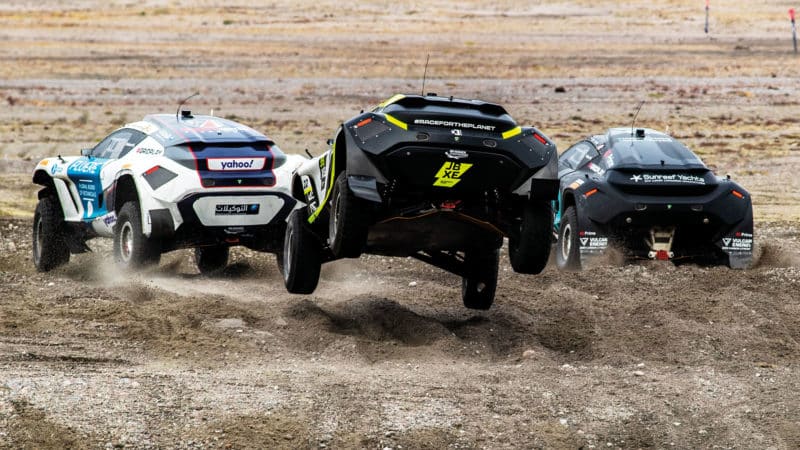
The Arctic X Prix final with Andretti United, Rosberg X Racing and JBXE bouncing across the tundra
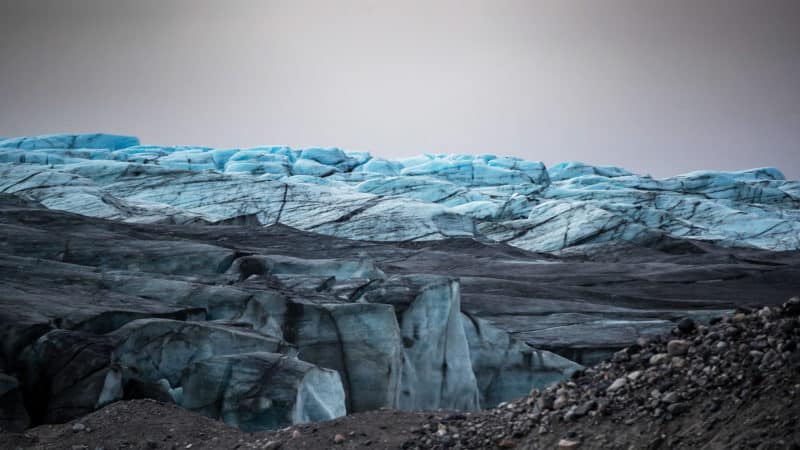
Russell Glacier, east of Kangerlussuaq
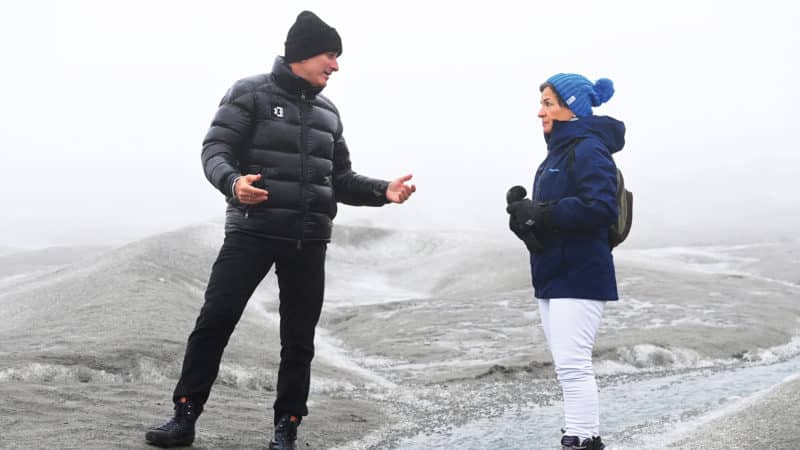
Extreme E CEO Alejandro Agag with the UN’s Christiana Figueres
Extreme E, or XE for short, is like Mad Max meets The Blue Planet. Imagine Formula 1 with Sir David Attenborough in the commentary box and you get the idea. This unique electric rally series is designed to draw attention to the climate emergency and show what electric vehicles can do.
Spanish politician turned motor racing entrepreneur Alejandro Agag has followed up the Formula E electric single-seater championship he established in 2014 with this even more ambitious brainwave. He’s the modern day Bernie Ecclestone, with a dash of Simon Cowell. Entertainment is at the heart of the concept. The inaugural race, in Saudi Arabia’s spectacular Al Ula desert, was watched by 18.7 million and the following race, up the coast from Dakar, was broadcast to even more.
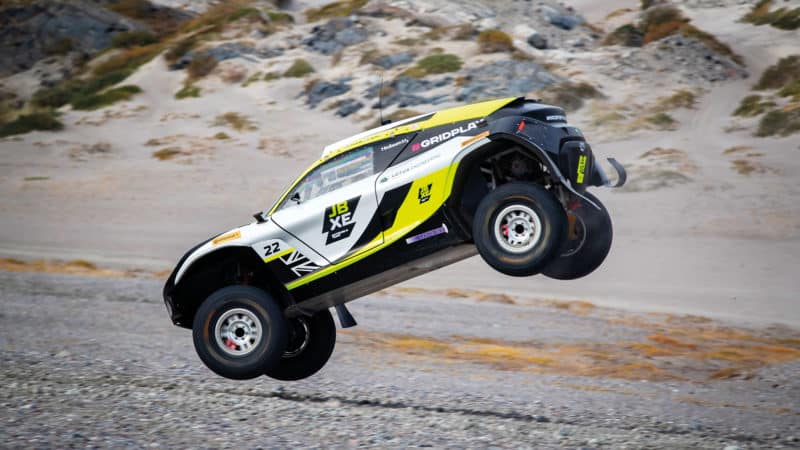
More air, this time from JBXE’s Odyssey 21
The first instalment brought attention to desertification and the plight of Red Sea turtles, while Senegal concentrated on plastic pollution and XE is funding the planting of a million carbon-capturing mangroves.
Of all the locations on the championship’s calendar, Greenland is ground zero for the most urgent issue XE seeks to highlight; the melting of the ice caps, and how this endangers life on our planet. The ice sheet on which we camped has dropped 180m in height in a decade. Billions of tonnes of ice melts every day. And it’s not meant to rain here, but it did. It’s easy to be cynical about EVs ripping through tortured landscapes. The series’ carbon footprint is, inevitably, greater than if everyone stayed at home but, as Agag likes to say, “You can’t make an omelette without breaking eggs.”
XE largely discourages spectators, but there is a hospitality tent and in Greenland it hosted Christiana Figueres who, in her role as United Nations executive secretary on climate change, was the main author of the 2015 Paris Agreement. I asked for her views on the need to turn petrolheads like me into electroheads. “The transport sector is responsible for roughly 30% of the world’s carbon emissions,” she explained. “We have to stop transporting ourselves in a polluting way, and this is a very important example of how you can push those boundaries with electric SUVs. We need catalysts to spark changes in technology and behaviour. There’s no doubt that motor sport is exciting and has many fans. We need to bring all of those people on the same journey.” Is having people like Lewis Hamilton and Nico Rosberg speaking out about climate change a game-changer? “Yes it is, because not only do they command public attention, they’re authoritative voices. They’re willing to stand on their fossil fuel legacy and move forward. They’re saying that was a moment in time and now we’re stepping into the future.”
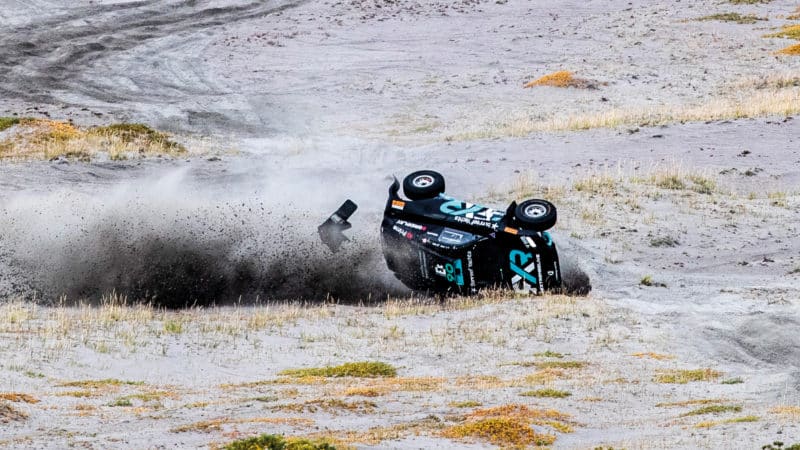
A flip for Molly Taylor but miraculously she landed back on her wheels
Rosberg and Hamilton both own XE teams, as does Jenson Button. JB tells me the green element was a major draw. “I have two little ones, and your views change. I’ve always lived in the moment, but when you have kids you think about what you’re leaving behind.”
Jenson was behind the wheel in Saudi, found the car too unpredictable for his liking, and handed driving duties over to Swede Kevin Hansen from Senegal onwards. Kevin is also passionate about the series’ wider aims and, along with most other drivers, likes to post eco-themed content on his social media channels. “We all need to share our story. We’re racing in Greenland; an incredible location which is suffering like crazy. People that ignore that are the problem. To be here is pretty life- changing, I must say. One of the best aspects of this series is we really get to experience the locations. That doesn’t happen with World Rallycross, where we go to WASP-y countries and just race. Here, we see the reality of the world, we’re not hiding in our bubbles.”
Diversity is also at the core of XE, with each team running a male and a female driver; the first time this has been mandated in motor sport. The women competing include 23-year- old Catie Munnings from Kent. “Normally we girls are all spread across the world in various championships, so it’s really good for so many of us to come together and encourage each other,” says Catie. The men include bona fide rally greats Sébastien Loeb and Carlos Sainz.
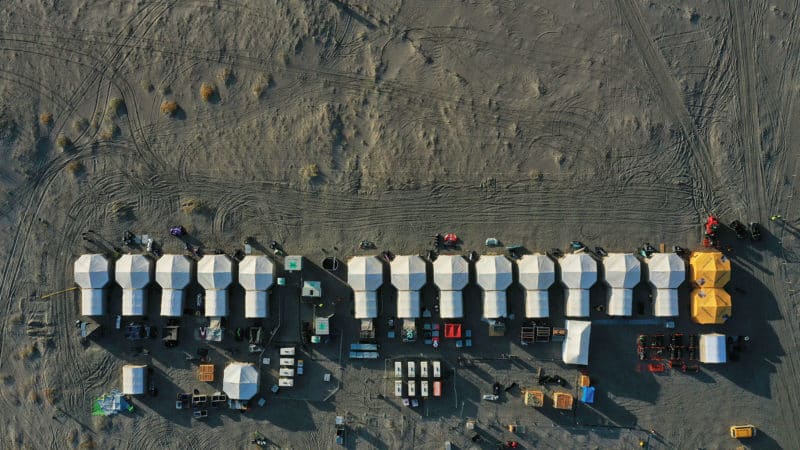
The on-land paddock, Extreme E-style
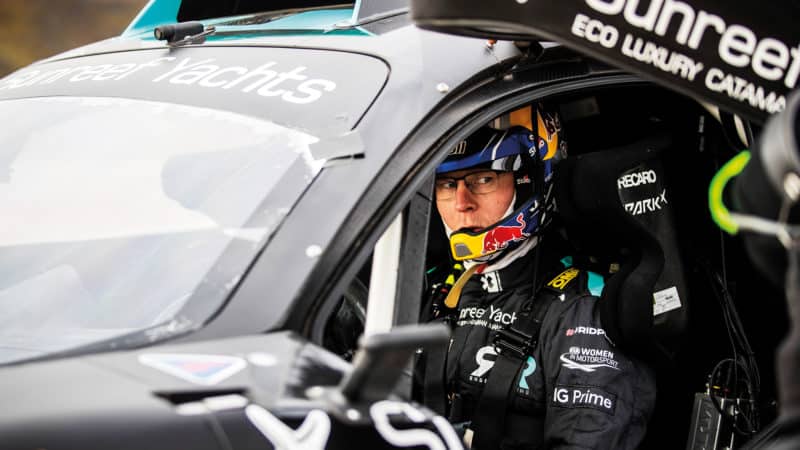
ohan Kristoffersson won the previous Desert and Ocean races alongside Molly Taylor
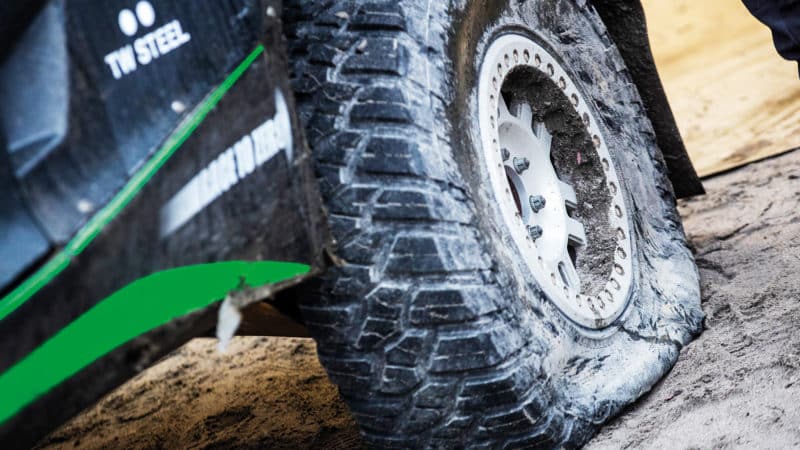
Steady on there, Stéphane Sarrazin
There are barely any roads in Greenland, and the Arctic X Prix is the first motor race it’s ever hosted. Known as the Ice Road, the gravel ribbon from Kangerlussuaq to the glacier is the longest in the country at 30 miles, and it passes the race site where the drivers battled across the plains from which the ice sheet has retreated. In its place is a varied surface of light grey sand, shale, grit and rock. The five-mile course required precision and bravery, as well as gambling one’s steering arms and wheel rims when it came to taking on the boulders of the so-called ‘rock garden’.
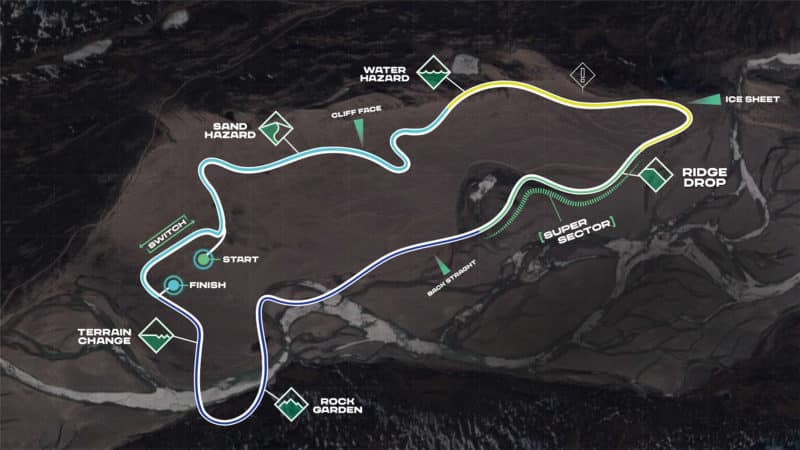
And you thought brands Hatch was tough…
At first glance, the drivers declared it the best circuit the championship has visited so far. Each session comprises two laps – one for each team-mate – with qualifying and three shoot-out races leading to a five-car final.
It was hoped that the much lower temperatures in Greenland would allow the cars’ batteries to run at maximum power. But it didn’t work out like that.
It’s easier to list the teams that didn’t have a technical issue in the qualifying sessions on Saturday: X44 and Acciona Sainz. The other teams all experienced stoppages, resulting from suspension failures, punctures and motor cut- outs which are still being diagnosed by the constructor of these spec-series machines, Spark Racing Technology, and battery supplier Williams Advanced Engineering.
Christened the Odyssey 21, we’ve yet to see anything like the Extreme E machine’s full potential. It’s not sufficiently robust, and the overheating batteries had to be wound-down from 275kW to 200kW, the lowest setting of the season yet. The dual-motor machine should be capable of running at 400kW (536bhp). Drivers and teams are grumbling about reliability and questioning the price of parts.
“We are learning every race and there are always new things,” said Carlos Sainz. “I think if I were a little younger and less patient, I would be more in the air [angry] and not so much in control as I am now. Obviously [the technical partners] need to raise their game.”
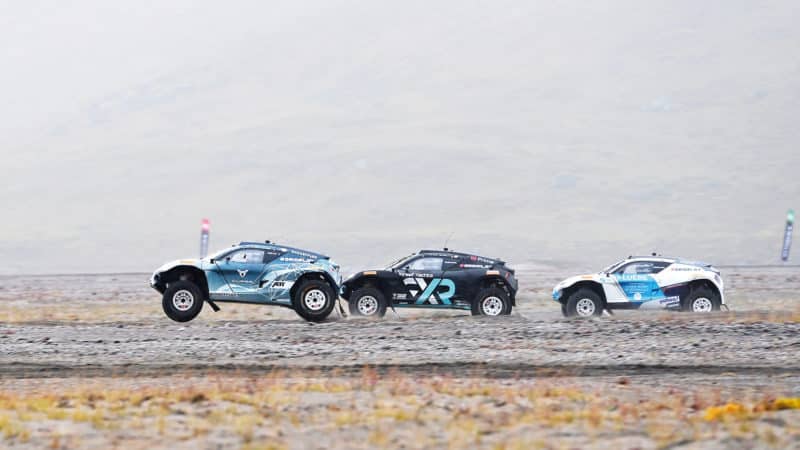
The car used by all the teams has faced teething problems
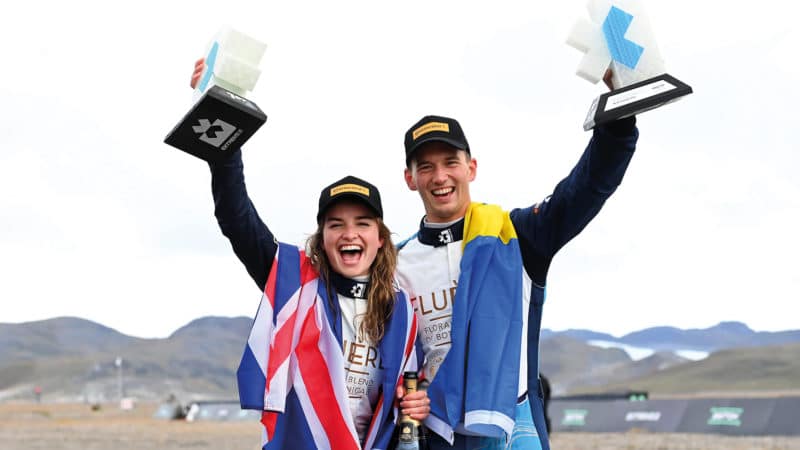
Champagne on ice: a win for British driver Catie Munnings of Andretti United and her Swedish team- mate Timmy Hansen
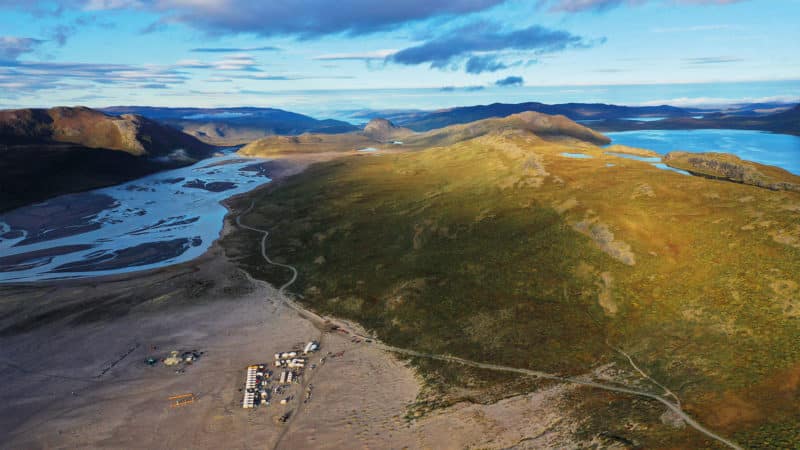
The most unlikely venue for a motor race but the setting made a profound impression on some of the drivers
Rosberg X Racing’s Molly Taylor managed to flip her car which, luckily, landed on its wheels and she was able to drive on with barely any delay and complete her lap. “The track is getting destroyed,” noted Munnings, “it’s so rough. It’s just about survival now.”
Officials changed the course overnight to avoid some of the most savage ruts as well as reduce the mileage on the batteries to curb the temperatures. The results on Sunday were not perfect – Veloce, Ganassi and Xite all suffered breakages – but there was close racing and thrilling victories, with Loeb and Munnings bringing home their X44 and Andretti United cars first in semi-finals one and two respectively. Special mention to Stéphane Sarrazin who destroyed his Veloce by smashing a tight line across the rock garden to briefly take the lead off Loeb, but who got so much air off one of the jumps he must have shown up on radar.
In the final, Loeb led before picking up a puncture. Munnings chased down Taylor and, after the driver switch, her Andretti United team-mate Timmy Hansen (Kevin’s brother) got ahead of countryman Johan Kristoffersson. The championship leader pulled back alongside Hansen but took a jump too aggressively, causing his car to conk out and deny Nico Rosberg’s team a third consecutive win. JBXE came second and Acciona Sainz third. Andretti United’s victory marks the high-point of former CBeebies TV presenter Catie’s career thus far.
The competition between the sexes is perhaps the most enthralling element. “What we’ve seen from the female drivers has been extraordinary,” says Agag. “We’ve built a platform where they can shine.”
Once again, Extreme E delivered high- energy entertainment and thought-provoking coverage but, like the eco issues it’s getting race fans to engage with, it has a challenge on its hands when it comes to the Odyssey 21. “They have some work to do on the cars,” noted Timmy Hansen. “They have to be stronger, but still we had some great racing, and there’s so much more to this than the technical side.”
Extreme E is a start-up, and there were always going to be teething problems. The pandemic is an additional headache, which caused the cancellation of the rounds slated for South America. Instead, the next race takes place in Sardinia on October 23-24. The Island X Prix will highlight the Mediterranean region’s heatwaves and wildfires. The final round of the season will take place in December and locations being considered include Egypt, Morocco and Greece.
